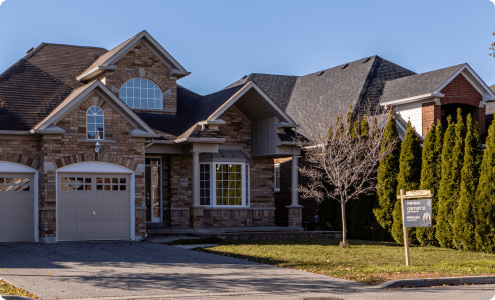Empowering Real Estate Professionals with Wildfire Risk Insights
Welcome to the Wildfire Risk Disclosure Program, brought to you by FortressFire, in collaboration with the California Association of REALTORS®. As wildfires continue to pose an increasing threat to California homes and communities, understanding and managing wildfire risk have become vital elements in real estate transactions.


Our program is designed to equip real estate professionals with cutting-edge tools and comprehensive reports to help your clients make informed decisions when buying or selling properties in wildfire-prone areas. Our Wildfire Disclosure Report (WFDR), based on satellite imagery, AI, and advanced physics models, offers property-specific insights to your clients, enabling them to assess vulnerabilities, understand state compliance and insurance industry standards, and consider essential mitigation and protection services.
No Surprises
Gain an edge in the competitive real estate market by offering your clients a comprehensive WFDR. This data-driven report provides an objective assessment of a property’s vulnerability, allowing buyers and sellers to proceed with confidence.
Mitigation
Services
Arm your clients with customized mitigation recommendations and cost estimates, assisting them in safeguarding their investment and enhancing property value. You can explore services that minimize risks and improve insurability.
Streamlined
Transactions
By obtaining the WFDR early in the process, you can accelerate the transaction cycle with more effective pricing and reduce uncertainties in real estate deals. Comply with California’s wildfire risk disclosure laws and ensure smooth, on-time closings.

Objective, Data-Driven Assessment
The Power of the Wildfire Disclosure Report (WFDR)
At the heart of our program lies the Wildfire Disclosure Report (WFDR), a groundbreaking tool that offers real estate professionals and their clients an unprecedented level of wildfire risk insights. Powered by advanced technology, data analytics, and fire science, the WFDR provides a comprehensive understanding of a property’s vulnerability, removing subjectivity and guesswork.

Precise Evaluations for Informed Decisions
The Wildfire Disclosure Report Includes:
Fuel Load Analysis: Assessing the property’s vegetation density to understand fire fuel potential.
Topographical Insights: Understanding how the terrain may influence fire behavior and spread.
Proximity to Fire-Prone Areas: Identifying potential risks based on the property’s location.
Alignment with State Regulations: Documents the status for AB 38 inspections and insurability standards.
Mitigation Recommendations and Costs: Offering personalized strategies to mitigate vulnerabilities and enhance insurability.
See Sample ReportArmed with this comprehensive data-driven report, real estate professionals and homeowners can make well-informed decisions regarding property transactions, compliance with regulations, and securing insurance coverage.
Wildfire Disclosure Report Frequently Asked Questions
As wildfires continue to pose increasing threats to California homes and communities, we are committed to equipping real estate professionals and their clients with the knowledge and tools needed to make informed decisions.
This FAQ page aims to provide you with comprehensive answers to common queries about our groundbreaking Wildfire Disclosure Report (WFDR) and the value it brings to your real estate transactions. From objective assessments to personalized mitigation recommendations, we are here to support you at every step of the journey.
Thank you for choosing the WFDR to enhance your understanding of wildfire risk and improve the resilience of California’s homes and communities.



